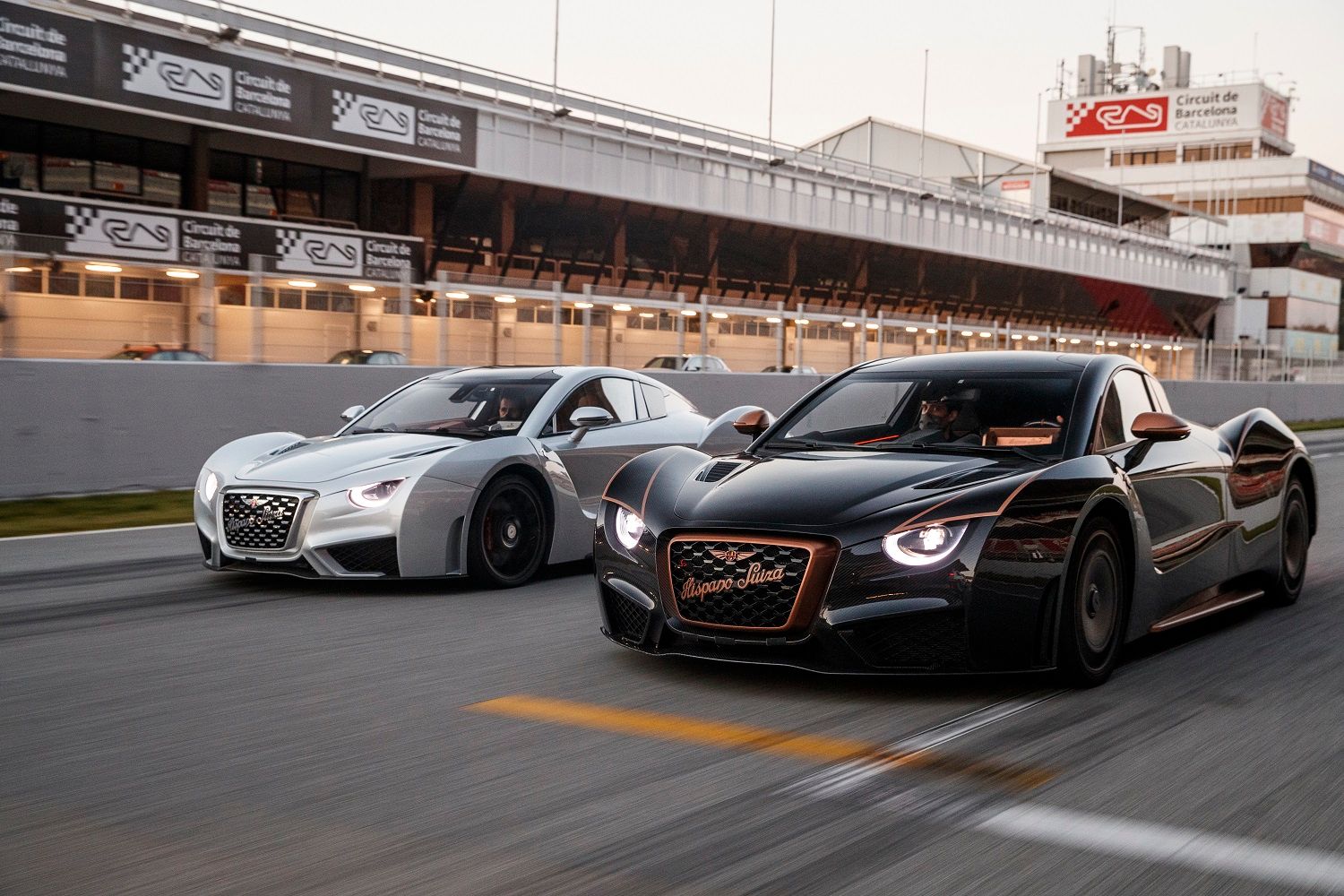Seven Lesser-Known Facts About Hispano-Suiza
Images: Hispano-Suiza Cars/Peralada Group
Founded in 1904 by Damián Mateu, Hispano-Suiza (literally Spain-Switzerland in Spanish) as a brand remains in the ownership of the same family for more than 117 years. The car of choice by aristocrats, kings and artists, who valued the exclusivity, the design, the technology, the reliability and the style of their Hispano-Suizas, the marque became an important part of Europe’s automotive industry.

During the last century, Hispano-Suiza has participated in numerous events, competitions and has also played an important role in the lives of its owners, including Alfonso XIII, King of Spain, who was truly passionate about the brand. This is just one of the almost unknown curiosities about the legendary company. Here is a list of seven facts you most likely didn´t know about Hispano-Suiza:
- More than 100 years of history
Founded on 14 June 1904 by Damián Mateu I Bisa together with Francisco Seix Zaya and Swiss engineer Marc Birkigt, who had worked for two companies which had preceded Hispano-Suiza: La Cuadra and J. Castro, it was Birkigt's experience in the industry which was key in laying the foundations for Hispano-Suiza.

In 1905, Hispano-Suiza created their first vehicle, the Armoured Type Birkigt System, powered by a 20bhp four-cylinder engine, and which reached a top speed of 87 km/h. It was followed, a year later, by what would be the first car with a six-cylinder engine built in Spain—a model delivering 75bhp of power that completed the Perpignan-to-Paris route in 22 hours, a feat which received great media attention at the time.
2. Hispano-Suiza did not just produce cars throughout its history
During World War I, Hispano-Suiza went from producing cars to manufacturing aircraft engines. Birkigt built an aircraft engine that was based on a racing car engine, following the ‘direct drive’ principle, with a V8 layout and aluminium alloy blocks to reduce weight. Hispano-Suiza began to receive numerous orders; so many that they had to sell licenses to other manufacturers in France, the United Kingdom, the United States, Italy, Japan and even Russia—in total, more than 50,000 Hispano-Suiza engines were built.

Hispano-Suiza aviation engines also found their place at sea. The most spectacular engine, a V12 delivering 1300bhp, was mounted on a series of racing boats, including the so-called Aurora, built in 1935. Birkigt collaborated on the assembly of this boat, which was auctioned a few years ago for a figure close to a million euros.
3. King Alfonso XIII played an important role in the early days of Hispano-Suiza
The monarch was a car enthusiast, who instantly fell in love with the 20CV Hispano-Suiza that he drove in in 1905. So much so that in 1910 he became a shareholder, purchasing 8 percent of the company shares. King Alfonso XIII also had a car named in his honour, a two-seater sports car, with a 60bhp 3619 cc four-cylinder engine, with a top speed 120 km/h. It was the Hispano-Suiza T45, better known as Hispano-Suiza Alfonso XIII.
4. A car for the elite
Thanks to the performance of its vehicles (which combined speed with lightness and amazing driving sensations, thanks to its luxury materials), the handcrafted-to-the-highest-quality-standards Hispano-Suiza immediately rose to fame.

In addition to King Alfonso XIII, the vehicles of the Spanish brand were chosen by aristocrats, intellectuals and the most renowned artists in the world, such as Gustavo V of Sweden, Carlos II of Romania, Louis II of Monaco, Pablo Picasso, André Citroën, Coco Chanel, René Lacoste, Paul McCartney or Albert Einstein.
5. Hispano-Suiza, not just a car but an asset of cultural interest
The Hispano-Suiza 30–40 HP was an important model in the history of the brand, developed by Birkigt as a replacement for the 20–30 HP. Of all those produced there, a very special unit was custom-built for the Marquis of Zayas and bodied by Francisco Capella.

This model used noble woods and materials such as ivory and silver. The steering wheel was positioned to the right, as was customary then, and featured mahogany details, ivory handles, bevelled glass, automatic blinds, fine cushioned upholstered seats, a perfume diffuser, vases and numerous details that underlined the elegance and exclusivity of the car. It was a Hispano-Suiza made to measure.
The model, after all cars once belonging to the Marquis of Zayas were auctioned, was acquired by the Spanish Home Office, which declared it an Asset of Cultural Interest in 1988, being the first car to achieve this status (which is normally granted to monuments and works of art). The vehicle was then displayed in the Museum of Automotive History located in Salamanca (Spain).
6. The stork
Hispano-Suiza's emblem, the stork, is a nod to the company's heritage as a manufacturer of aircraft engines. The brand decided to feature it in all its models to pay tribute to Georges Guynemer, a French fighter ace, who had a stork painted on the fuselage of its fighter jet during World War I, powered by a Hispano-Suiza engine.

In 1919, the silver stork accompanied the new Hispano-Suiza H6B in its presentation at the Paris Motor Show and, since then, it featured in all the brand's models, accompanied by the flags of Spain and Switzerland.
7. Carmen is the name that Hispano-Suiza has given to the vehicle with which it made its comeback to the world of automotive manufacturing a couple of years ago
The choice of the name is not a mere coincidence: it is a tribute to Mrs. Carmen Mateu, granddaughter of Damián Mateu—founder of the company—and mother of the current president of Hispano-Suiza, Miguel Suqué Mateu.
Comments
Sign in or become a deRivaz & Ives member to join the conversation.
Just enter your email below to get a log in link.

